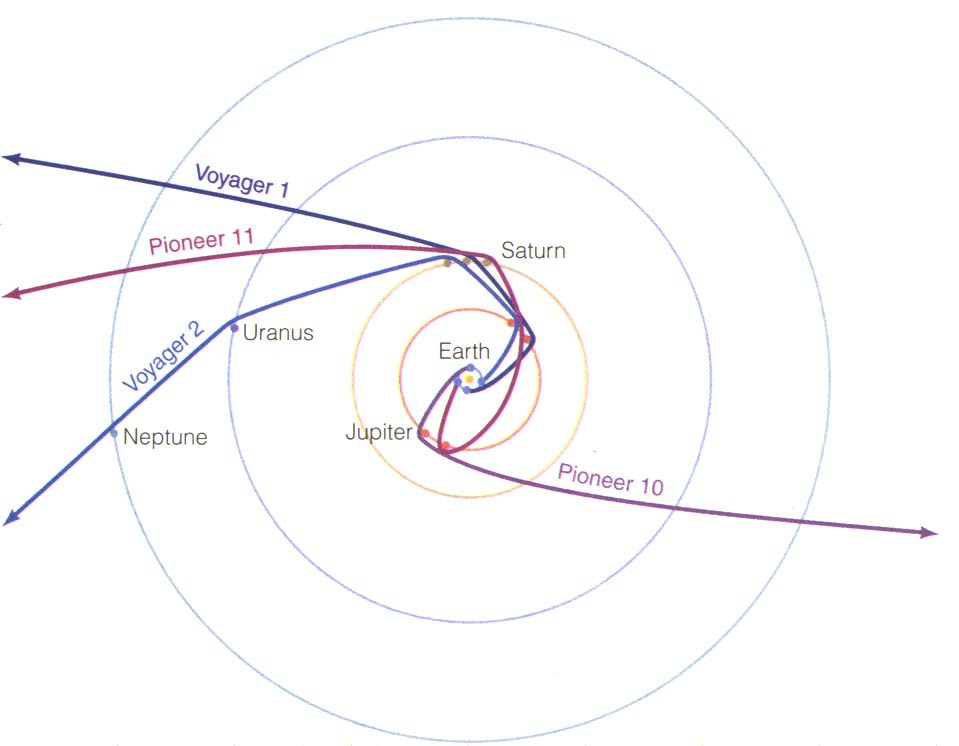New Mars Forums
You are not logged in.
- Topics: Active | Unanswered
Announcement
#1 2019-11-05 18:04:28
- SpaceNut
- Administrator
- From: New Hampshire
- Registered: 2004-07-22
- Posts: 29,889
5 Interstaller probes where are they now
Was reminded that it would be intersting to know where the farthest out probes and where are they heading. The list is old but not all are sending back data any longer. These were designed around nuclear power in the form of rtg reactions where heat with some electrical is produced but like all nuclear devices the rate of decay is also the end of life as the fuel runs out.
Pioneer 10
Pioneer 11
Voyager 1
voyager 2
New Horizon
https://www.nasa.gov/mission_pages/voya … 14112.html

Relative Positions of Distant Spacecraft
This graphic shows the relative positions of NASA’s most distant spacecraft in early 2011, looking at the solar system from the side. Voyager 1 is the most distant spacecraft, about 17.5 billion kilometers (10.9 billion miles) away from the sun at a northward angle. Pioneer 10, the next most distant, is about 15.4 billion kilometers (9.6 billion miles) away from the sun on the opposite side of the solar system. Voyager 2 is about 14.2 billion kilometers (8.8 billion miles) away from the sun on a southward trajectory, on the same side of the solar system as Voyager 1. Pioneer 11 is about 12.4 billion kilometers (7.8 billion miles) away from the sun. New Horizons is about 3 billion kilometers (2 billion miles) away from the sun, on its way to Pluto.
The Voyagers were built by NASA's Jet Propulsion Laboratory in Pasadena, Calif., which continues to operate both spacecraft. JPL is a division of the California Institute of Technology in Pasadena. The Voyager missions are a part of the NASA Heliophysics System Observatory, sponsored by the Heliophysics Division of the Science Mission Directorate.
For more information about the Voyager spacecraft, visit http://www.nasa.gov/voyager and http://voyager.jpl.nasa.gov .
https://www.planetary.org/multimedia/sp … paths.html

Offline
Like button can go here
#2 2020-11-23 20:11:34
- SpaceNut
- Administrator
- From: New Hampshire
- Registered: 2004-07-22
- Posts: 29,889
Re: 5 Interstaller probes where are they now
So how do we travel large distances when chemical rockets need to waste most of the resources just to get out of earths gravity well.
The Rocket Engine That Proves Solar Thermal Propulsion Isn't Just a Crazy Theory
Engineers at the Johns Hopkins University Applied Physics Laboratory are prototyping a previously theoretical rocket design that could someday take spacecraft to interstellar space. Their plan? Use heat from the sun, rather than combustion, to power a rocket engine.
https://www.jhuapl.edu/InterstellarProbeExploration/
http://interstellarprobe.jhuapl.edu/
Some data of the others at the end of the topic article.
Offline
Like button can go here
#3 2020-12-22 17:27:20
- Dayton3
- Member
- Registered: 2002-06-03
- Posts: 137
Re: 5 Interstaller probes where are they now
I wouldn't really call them "interstellar probes" unless they stood a chance of actually entering another solar system in operating condition
Last edited by Dayton3 (2020-12-22 17:27:37)
Offline
Like button can go here
#4 2020-12-22 17:42:03
- SpaceNut
- Administrator
- From: New Hampshire
- Registered: 2004-07-22
- Posts: 29,889
Re: 5 Interstaller probes where are they now
Long time no see but good to have you back...
I can agree with that so what are the chances knowing that the power source is decaying all along the way?
At current speeds will they even make it to a destination that could see the probes still have power to even know that its arrived?
Offline
Like button can go here
